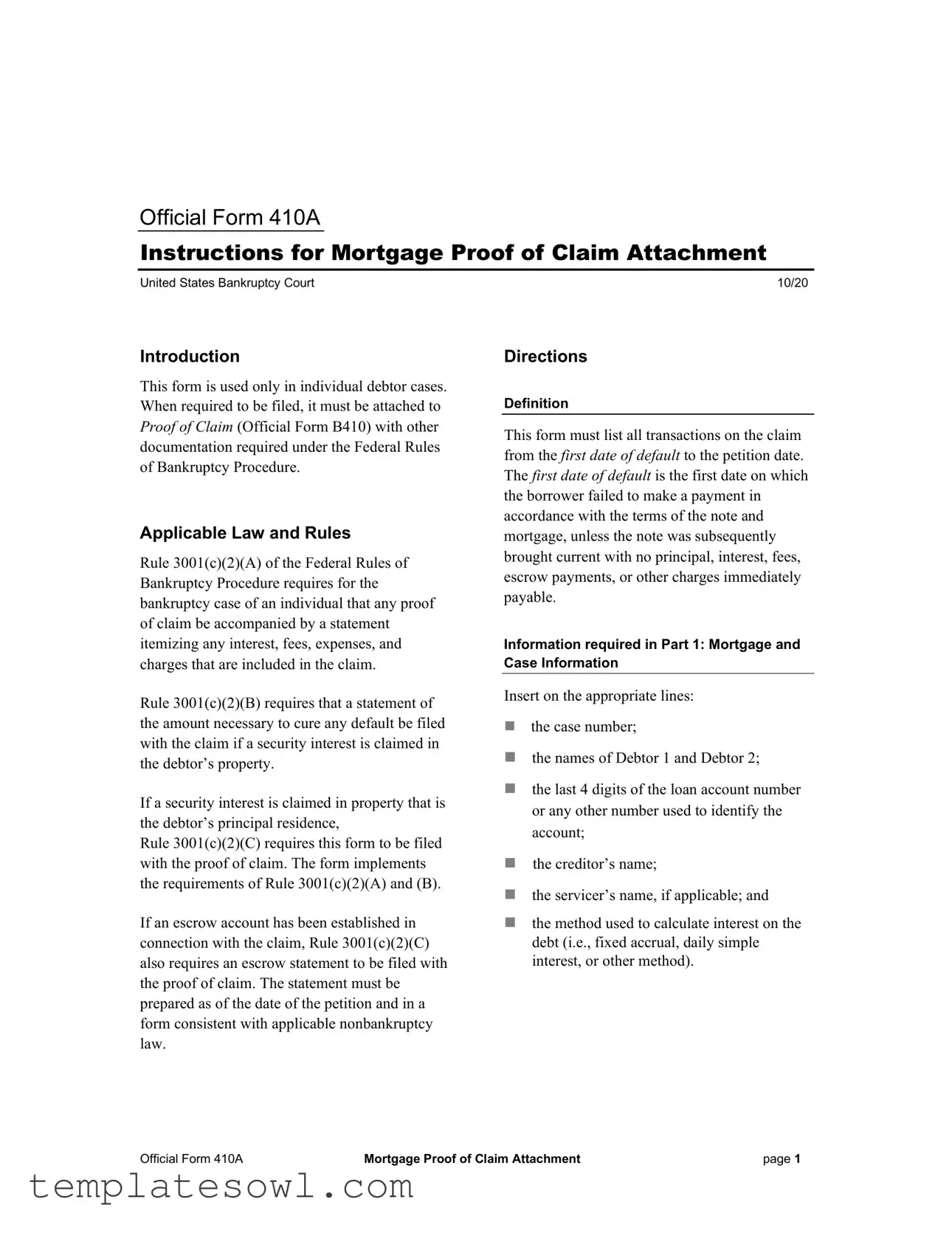Filling out the Proof of Claim Attachment form can be intricate, and many individuals make mistakes that can complicate their bankruptcy cases. Understanding these common pitfalls can help ensure that the form is filled out accurately and efficiently.
One common error is failing to include all required information in Part 1, the Mortgage and Case Information section. Many people neglect to fill in essential details, such as the case number or the last four digits of the loan account. Omissions like these can lead to delays or even rejection of the claim.
Another mistake occurs in Part 2, where individuals often miscalculate the total debt. Some may forget to include certain fees or costs owed under the note, or fail to disclose escrow deficiencies. To accurately report the total debt, it is crucial to double-check all figures and ensure that every applicable amount is included.
In Part 3, many claimants mistakenly include the escrow portion of prepetition monthly installments when reporting arrearages. It’s essential to remember that only the principal and interest should be counted here. This misunderstanding can skew the figures and lead to potential disputes later on.
Additionally, there are individuals who do not properly calculate the projected escrow shortage. This figure should reflect the amount believed to be necessary for a functioning escrow account as of the petition date. Failing to accurately assess this can lead to further issues when trying to cure any defaults associated with the mortgage.
Part 4 of the form requires specific calculations of the monthly mortgage payment. Some affiliates make the mistake of overlooking the monthly private mortgage insurance. This oversight can result in an incomplete picture of the required monthly payments, leading to confusion for all parties involved.
Another frequent issue arises in Part 5, where individuals fail to maintain a clear and chronological loan payment history. Some claimants make entries out of order, which can disrupt clarity and make it difficult for reviewers to assess the payment history. Accurately documenting these transactions is essential.
In many cases, claimants forget to attach vital supporting documents outlined in the form’s instructions. This flaw can delay processing and hinder the ability to properly evaluate the claim. Every required document should accompany the Proof of Claim to avoid potential complications.
Finally, individuals often ignore or misinterpret the requirements surrounding the escrow account. The rules state that an escrow statement must be included if one exists. Not paying attention to this detail can undermine the integrity of the claim filed.
By avoiding these common mistakes, individuals can improve their chances of a smooth bankruptcy process. Attention to detail is crucial, and taking time to thoroughly review each section before submission can make a significant difference.





